
|
butyric acid |
butyric acid is a lipid of Fatty Acyls (FA) class. Butyric acid is associated with abnormalities such as PARKINSON DISEASE, LATE-ONSET, Colitis, Autoimmune Diseases, Inflammatory Bowel Diseases and PARAGANGLIOMAS 2. The involved functions are known as DNA Methylation, Transcription, Genetic, chromatin modification, Gene Expression and Gene Silencing. Butyric acid often locates in Membrane, Chromatin Structure, Chromosomes, viral nucleocapsid location and Ribosomes. The associated genes with butyric acid are Locus, Genes, Dominant, Genes, rRNA, Genome and Chromatin. The related lipids are Butyrates, butyrate, Promega, Butyric Acids and Butyric Acid. |
9358 |
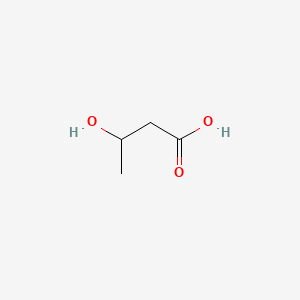
|
3-hydroxybutyric acid |
3-hydroxybutyric acid is a lipid of Fatty Acyls (FA) class. 3-hydroxybutyric acid is associated with abnormalities such as Ketosis. The involved functions are known as fatty acid oxidation, Oxidation, Synthesis, inhibitors and glucose metabolism. 3-hydroxybutyric acid often locates in Blood, Adipose tissue, Protoplasm, Hepatic and Extracellular. The associated genes with 3-hydroxybutyric acid are Genes, Developmental and Oncogene, RET. The related lipids are Fatty Acids, Nonesterified, 6-hydroxyhexanoate, tributyrin, 3-Hydroxyvalerate and Valerates. |
4735 |
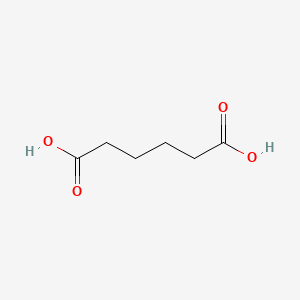
|
Adipic acid |
Adipic acid is a lipid of Fatty Acyls (FA) class. Adipic acid is associated with abnormalities such as Asthma and Asthma, Occupational. The involved functions are known as Uptake, Process, Oxidation, physiological aspects and Anabolism. Adipic acid often locates in Chromosomes and Flank (surface region). The associated genes with Adipic acid are Homologous Gene, Open Reading Frames, Structural gene, Gene Clusters and Genes, Essential. The related lipids are sebacic acid and 6-hydroxyhexanoic acid. |
686 |
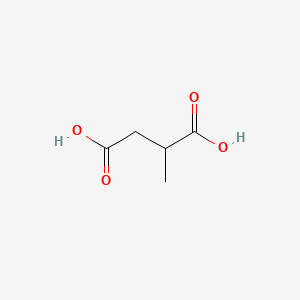
|
Methylsuccinic acid |
Methylsuccinic acid is a lipid of Fatty Acyls (FA) class. |
101 |
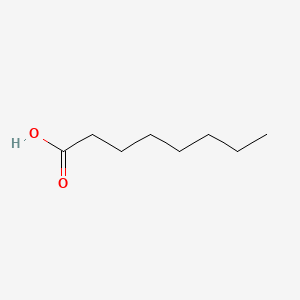
|
octanoic acid |
octanoic acid is a lipid of Fatty Acyls (FA) class. Octanoic acid is associated with abnormalities such as Ischemia, Diabetes Mellitus, Non-Insulin-Dependent, Diabetes, Cardiomyopathies and Obesity. The involved functions are known as Anabolism, 5-(carboxyamino)imidazole ribonucleotide mutase activity, Citric Acid Cycle, Metabolic Inhibition and Excretory function. Octanoic acid often locates in Pore, Protoplasm, Endothelium, Mitochondria and Muscle. The associated genes with octanoic acid are P4HTM gene, CPT1A gene, HADH gene, ACSL1 Gene and CD36 gene. The related lipids are Fatty Acids, Nonesterified Fatty Acids, Oleates, Palmitates and hexanoic acid. |
3349 |
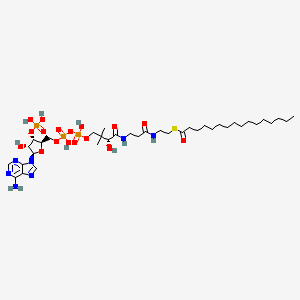
|
Palmitoyl coenzyme a |
|
291 |
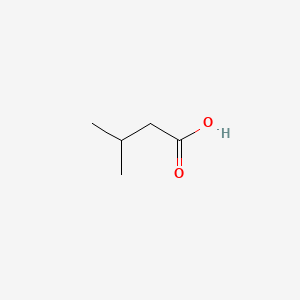
|
ISOVALERIC ACID |
ISOVALERIC ACID is a lipid of Fatty Acyls (FA) class. Isovaleric acid is associated with abnormalities such as Infection, Lymphocele, Cyst, Abscess and Subgingival plaque. The involved functions are known as Biochemical Reaction, 5-(carboxyamino)imidazole ribonucleotide mutase activity, nitrate reductase activity, urease activity and colony morphology. Isovaleric acid often locates in Skeleton, Abdomen, Chromosomes, Tissue membrane and Microsomes. The associated genes with ISOVALERIC ACID are trypticase, Operon, KCNT1 gene, Genome and Reverse primer. The related lipids are Fatty Acids, Propionate, Fatty Acids, Unsaturated, Steroids and Promega. The related experimental models are Knock-out. |
739 |

|
Linoleic acid |
Linoleic acid is a lipid of Fatty Acyls (FA) class. Linoleic acid is associated with abnormalities such as Diabetes Mellitus, Non-Insulin-Dependent, Metabolic syndrome, Obesity, Chronic Obstructive Airway Disease and Pneumonia. The involved functions are known as Insulin Resistance, Inflammation, Synthesis, Pathological accumulation of air in tissues and cytokine biosynthesis. The associated genes with Linoleic acid are TNF gene, CCL2 gene and TLR4 gene. The related lipids are palmitoleic acid, nervonic acid and Sphingolipids. |
5699 |

|
Linoelaidic acid |
Linoelaidic acid is a lipid of Fatty Acyls (FA) class. Linoelaidic acid is associated with abnormalities such as Obesity, Diabetes Mellitus, Non-Insulin-Dependent, Pneumonia, Chronic Obstructive Airway Disease and Metabolic syndrome. The involved functions are known as Metabolic Inhibition, Steroid biosynthesis, Signal Transduction, Insulin Resistance and Inflammation. Linoelaidic acid often locates in Mitochondria, Membrane and Cytoplasmic matrix. The associated genes with Linoelaidic acid are FFAR1 gene, C9orf7 gene, TNF gene, CCL2 gene and TLR4 gene. The related lipids are Fatty Acids, octadecadienoic acid, Steroids, methyl linoleate and Cyanoketone. |
10058 |

|
alpha-linolenic acid |
Alpha-linolenic acid is a lipid of Fatty Acyls (FA) class. Alpha-linolenic acid is associated with abnormalities such as Coronary heart disease, abnormal fragmented structure, Arterial thrombosis and Subarachnoid Hemorrhage. The involved functions are known as Anabolism, Signal, Transcription, Genetic, Saturated and Regulation. Alpha-linolenic acid often locates in Blood, Body tissue, Plasma membrane, Hepatic and peroxisome. The associated genes with alpha-linolenic acid are FATE1 gene, volicitin, CYP2U1 gene, CYP1A2 gene and CYP2J2 gene. The related lipids are Fatty Acids, Dietary Fatty Acid, stearidonic acid and Fatty Acids, Nonesterified. |
4231 |

|
DHA |
Dha is a lipid of Fatty Acyls (FA) class. Dha is associated with abnormalities such as Atherosclerosis, Consumption-archaic term for TB, Chronic disease, Cardiovascular Diseases and Diabetes Mellitus, Non-Insulin-Dependent. The involved functions are known as Inflammation, Oxidation, fatty acid oxidation, Fatty Acid Metabolism and Lipid Metabolism. Dha often locates in Hepatic, Protoplasm, Mucous Membrane, Epithelium and outer membrane. The associated genes with DHA are IMPACT gene, FATE1 gene, GAPDH gene, THOC4 gene and SLC33A1 gene. The related lipids are stearidonic acid, Fatty Acids, Total cholesterol, Lipopolysaccharides and Dietary Fatty Acid. The related experimental models are Mouse Model, Transgenic Model, Animal Disease Models and Arthritis, Experimental. |
11054 |

|
(r)-3-hydroxybutanoic acid |
(r)-3-hydroxybutanoic acid is a lipid of Fatty Acyls (FA) class. |
2710 |
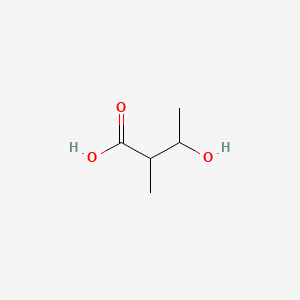
|
2-methyl-3-hydroxybutyric acid |
2-methyl-3-hydroxybutyric acid is a lipid of Fatty Acyls (FA) class. |
51 |

|
Ethylmalonic acid |
Ethylmalonic acid is a lipid of Fatty Acyls (FA) class. Ethylmalonic acid is associated with abnormalities such as Petechiae and Metabolic Diseases. The involved functions are known as Oxidation, Catabolic Process, Excretory function and Acidemia. Ethylmalonic acid often locates in Mitochondria. The associated genes with Ethylmalonic acid are N-caproylglycine and ETHE1 gene. The related lipids are Fatty Acids and sebacic acid. |
169 |
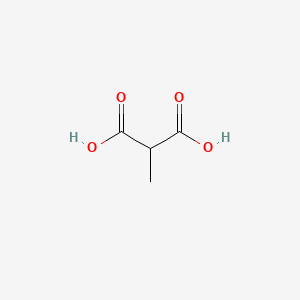
|
Methylmalonic acid |
Methylmalonic acid is a lipid of Fatty Acyls (FA) class. Methylmalonic acid is associated with abnormalities such as Vitamin B 12 Deficiency, Osteoporosis, Anemia, Anemia, Megaloblastic and Renal impairment. The involved functions are known as Abnormal renal function, Lactation, physiological aspects, phosphoglycerate dehydrogenase activity and Excretory function. Methylmalonic acid often locates in Entire bony skeleton, Blood, Protoplasm, Muscle and Body tissue. The associated genes with Methylmalonic acid are IMPACT gene, ACSF3 gene, CBLC gene, MMADHC gene and LMBRD1 gene. The related lipids are Fatty Acids and Butanols. |
3174 |
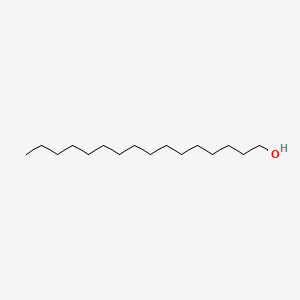
|
Cetyl alcohol |
Cetyl alcohol is a lipid of Fatty Acyls (FA) class. |
511 |

|
L-octanoylcarnitine |
L-octanoylcarnitine is a lipid of Fatty Acyls (FA) class. |
125 |

|
Triolein |
Triolein is a lipid of Glycerolipids (GL) class. Triolein is associated with abnormalities such as Lymph fistula and Hyperlipidemia. The involved functions are known as Exocytosis, cholesterol transport and lipoprotein lipase activity. Triolein often locates in Mucous Membrane, Hepatic and Intestinal Mucosa. The related lipids are Cholesterol, Dietary. The related experimental models are Knock-out. |
2752 |

|
PE(15:0/20:0) |
PE(15:0/20:0) is a lipid of Glycerophospholipids (GP) class. Pe(15:0/20:0) is associated with abnormalities such as Exanthema, Infection, Painful Bladder Syndrome, Obesity and Fatty Liver. The involved functions are known as conjugation, Transcription, Genetic, Sinking, Autophagy and Protein Biosynthesis. Pe(15:0/20:0) often locates in membrane fraction, soluble, Membrane, Body tissue and Tissue membrane. The associated genes with PE(15:0/20:0) are GABARAPL2 gene, ATG10 gene, ATG12 gene, SLC33A1 gene and GABARAP gene. The related lipids are Liposomes, Lipopolysaccharides, Phosphatidylserines, Membrane Lipids and Cardiolipins. The related experimental models are Knock-out and Cancer Model. |
723 |
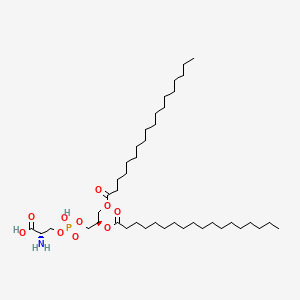
|
51446-62-9 |
51446-62-9 is a lipid of Glycerophospholipids (GP) class. 51446-62-9 is associated with abnormalities such as Virus Diseases, Infection, Bacterial Infections, Communicable Diseases and Exanthema. The involved functions are known as Phagocytosis, Obstruction, Binding (Molecular Function), targeting and inhibitors. 51446-62-9 often locates in Head, Clone, Cell membrane, Cell surface and host. The associated genes with 51446-62-9 are Homologous Gene, Orthologous Gene, Fusion Protein, ETV3 gene and Amino Acids, Basic. The related lipids are Phosphatidylserines, Lipopolysaccharides, 1-palmitoyl-2-oleoylphosphatidylethanolamine, beta-amyrin and Membrane Lipids. |
1744 |
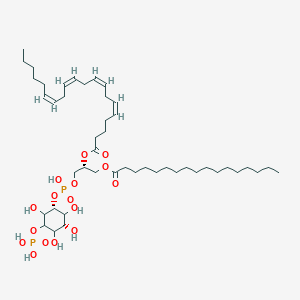
|
PIP[5'](17:0/20:4(5Z,8Z,11Z,14Z)) |
PIP[5'](17:0/20:4(5Z,8Z,11Z,14Z)) is a lipid of Glycerophospholipids (GP) class. Pip[5'](17:0/20:4(5z,8z,11z,14z)) is associated with abnormalities such as Diabetes Mellitus, Non-Insulin-Dependent. The involved functions are known as Phosphorylation, 1-phosphatidylinositol-4-phosphate 5-kinase activity, Signal, cellular process and Signal Transduction. Pip[5'](17:0/20:4(5z,8z,11z,14z)) often locates in Membrane, Cytoskeleton, Extracellular, Protoplasm and Plasma membrane. The associated genes with PIP[5'](17:0/20:4(5Z,8Z,11Z,14Z)) are PIKFYVE gene, Homologous Gene, PTEN gene, Genome and LGALS4 gene. The related lipids are phosphatidylinositol 5-phosphate, phosphatidylinositol 4-phosphate, Liposomes and Sphingolipids. |
220 |

|
1-Oleoyl Lysophosphatidic Acid |
1-Oleoyl Lysophosphatidic Acid is a lipid of Glycerophospholipids (GP) class. 1-oleoyl lysophosphatidic acid is associated with abnormalities such as Myocardial Infarction, early pregnancy, Scleroderma, Blind Vision and Hyperlipidemia. The involved functions are known as Agent, Blood coagulation, Selection, Genetic, Analyte and Biological Processes. 1-oleoyl lysophosphatidic acid often locates in Tissue specimen, Body tissue, Blood, Membrane and Skin. The associated genes with 1-Oleoyl Lysophosphatidic Acid are Mucin-16, Peptides, SMAD4 gene, RND1 gene and Polypeptides. The related lipids are lysophosphatidic acid, A(2)C, Lysophospholipids, Fatty Acids and sphingosine 1-phosphate. The related experimental models are Mouse Model, Knock-out, Cancer Model, Xenograft Model and Arthritis, Adjuvant-Induced. |
3463 |

|
lysophosphatidic acid |
lysophosphatidic acid is a lipid of Glycerophospholipids (GP) class. Lysophosphatidic acid is associated with abnormalities such as Atherosclerosis, Alzheimer's Disease, Asthma, Diabetes Mellitus, Non-Insulin-Dependent and Septicemia. The involved functions are known as Inflammation, Chemotaxis, Binding (Molecular Function), Polymerization and Inflammatory Response. Lysophosphatidic acid often locates in Cytoskeleton, Microfilaments, actin cytoskeleton, Extracellular and Structure of germinal center of lymph node. The associated genes with lysophosphatidic acid are TNF gene, MAPK3 gene, RHOA gene, CDC42 gene and ADRBK1 gene. The related lipids are lysophosphatidic acid, Lipopolysaccharides, Lysophosphatidylcholines, Lysophospholipids and Phosphatidic Acid. The related experimental models are Knock-out, Transgenic Model, Rodent Model and Disease model. |
820 |

|
Pristanic acid |
Pristanic acid is a lipid of Prenol Lipids (PR) class. Pristanic acid is associated with abnormalities such as Refsum Disease, Peroxisomal Disorders, Hereditary Diseases, Peripheral Neuropathy and Sensory neuropathy. The involved functions are known as physiological aspects, Regulation, Pathogenesis, Oxidation and Peroxisome Proliferator-activated Receptor Activity [MoA]. Pristanic acid often locates in peroxisome, Body tissue, Mitochondria, Membrane of peroxisome and Organelles. The associated genes with Pristanic acid are PSG5 gene, LGALS4 gene, PEX2 gene, ACSL4 gene and ACSL1 Gene. The related lipids are pristanic acid, Fatty Acids, branched chain fatty acid, Plasmalogens and 3-hydroxypristanic acid. |
246 |

|
cholesterol |
cholesterol is a lipid of Sterol Lipids (ST) class. Cholesterol is associated with abnormalities such as Trypanosomiasis, Chagas Disease, Cleft Palate, Chondrodysplasia punctata 2, X-linked dominant and Child syndrome. The involved functions are known as Blood Circulation, Sterol Biosynthesis Pathway, Receptor Mediated Endocytosis, Methylation and Signal. Cholesterol often locates in Animal tissue, Blood, Membrane, Plasma membrane and peroxisome. The associated genes with cholesterol are MBD2 gene, SIM, SLC33A1 gene, Genome and NSDHL gene. The related lipids are Sterols, zymosterol, fecosterol, Total cholesterol and 7-dehydrocholesterol. The related experimental models are Mouse Model, Knock-out, Genetically Engineered Mouse and Disease model. |
98461 |
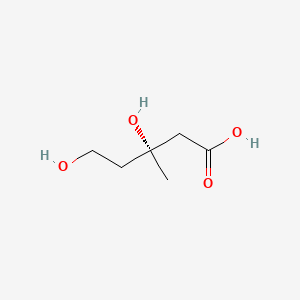
|
Mevalonic acid |
Mevalonic acid is a lipid of Fatty Acyls (FA) class. |
1437 |

























